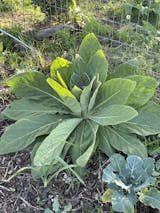Pollinator Fact of the Day #2 Posted on 2 Jan 07:03 , 0 comments
Welcome to Day 2 of our Plant for Pollinators series.
Each day we'll have a new "pollinator fact of the day" as well as planting tips.
How Animal Pollination Works
Pollinators visit flowers in their search for food (nectar and pollen). During a flower visit, a pollinator may accidentally brush against the flower’s reproductive parts, unknowingly depositing pollen from a different flower. The plant then uses the pollen to produce a fruit or seed. Many plants cannot reproduce without pollen carried to them by foraging pollinators.
If you are looking to incorporate more plant varieties that will attract beneficial pollinators you might consider Companion Planting.
Companion planting is based around the idea that certain plants can benefit others when planted next to, or close to one another.
Companion planting exists to benefit certain plants by giving them pest control, naturally without the need to use chemicals, and in some cases came mean a higher crop yield
Let's plant more to pollinators!
Sign up for our E-Newsletter









